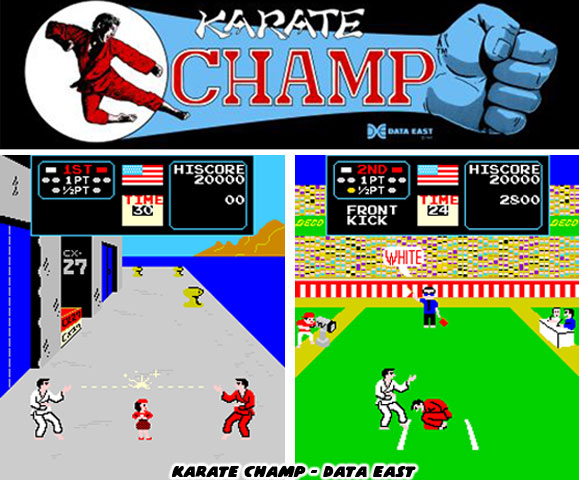
Karate Champ was notable for using different backgrounds and locations to help tell a story. The main character went from dojo to dojo and even traveled around the world challenging opponents. While the main characters wore red or white it was due to limitations in the hardware. They were supposed to represent different fighters and even nationalities. This globe-trotting fighter was a Mas Oyama-type, a karate as the superior fighting form stand-in. Even the bonus stages were reflective of the demonstrations that Oyama would put on. He would break boards and even stones with his bare hands and his fights against bulls were legendary. But I'll go into greater detail on that in a future blog. In Karate Champ players could also break boards or even ceramic pots and bottles thrown at them. It was a little silly but made the fighter look like a badass. Karate Champ was mildly popular but the runaway hit from 1984 was a different type of fighting game. Irem released Kung-Fu Master, a game based loosely on Bruce Lee's final film "Game of Death." Kung-Fu Master predated Renegade (Technos, 1986) and Double Dragon (Technos, 1987) and could actually be considered the forefather of the brawler.
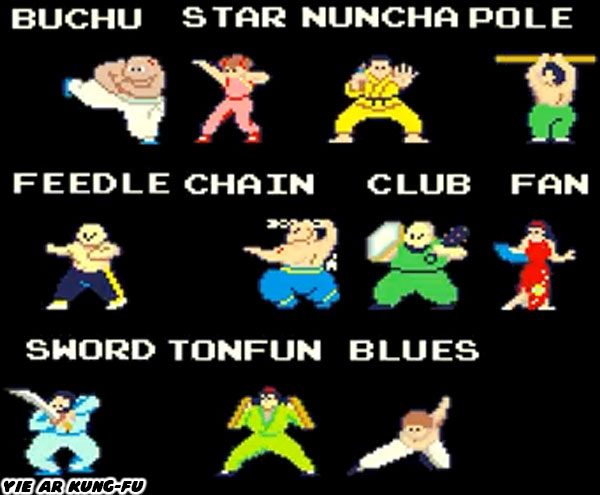
The first few kung-fu games created a framework that would be followed by the rest of the industry. Konami released Yie Ar Kung-Fu in 1985. It featured masters of different forms of kung-fu against a hero named Oolong. Some of the fighters used weapons while others user their hands and feet. It was notable for the traditional locations players visited as well as being the first fighting game that featured female opponents. Yie-Ar Kung was a fast-paced, very frenetic fighting game. There were no pauses in action, no chance for the player to breathe. The focus was less on realism and more on capturing the energy and slick choreography of kung-fu action films. The slow, calculated scoring system of Karate Champ was thrown out the window. Nonstop action would become the style of gameplay that Capcom and the other studios would try to build upon. Because of this the kung-fu master would become a trope in fighting games, especially Japanese fighting games. Lee and Gen appeared just two years after Yie Ar Kung-Fu. They kept the classical costumes with them. Capcom had unveiled a game engine capable of putting larger sprites with greater fidelity and more colors on the screen than Konami had done. This engine was used as the backbone for the original Street Fighter.
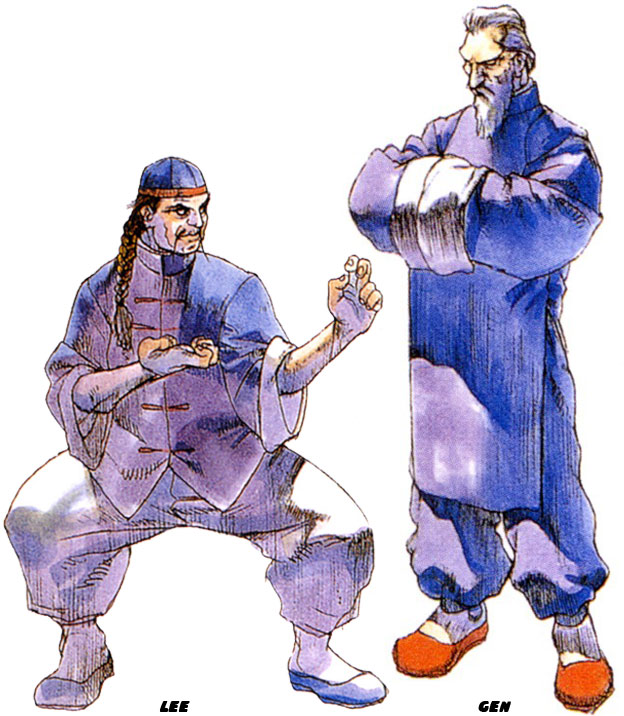
Kung-Fu masters were so well known globally that almost every fighting game had to make use of them. Three of the greatest fighters in Virtua Fighter tournament play and also in canon were Pai Chan, her father Lau Chan and family friend and "Drunken Master" Shun Di. Sega was one of the pioneers of 3D technology in arcade games and created what is generally regarded as the first 3D fighting game. Virtua Fighter was a hit from 1993. It had realistic graphics, lighting and quasi-realistic physics as well. These were things that audiences hadn't really seen before. The game was set in the modern world but many of the fighters were presented with classic uniforms, especially the Chinese ones. Pai and Lau were in the original game and Shun Di appeared in the sequel a year later.
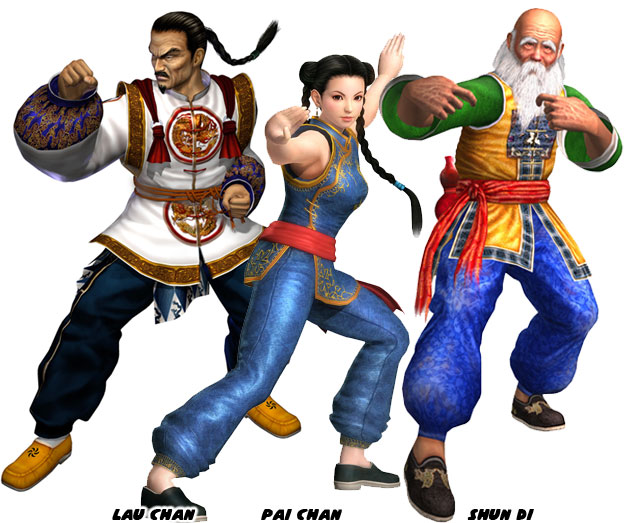
Not to be outdone Namco released their first 3D fighting game in 1994. The studio had a long standing rivalry with Sega. Anything one studio did the other studio tried to do better. It was seen in racing games, space shooters and especially fighting games. Tekken was the result of their work and audiences were split as to which 3D fighting game was better. The elderly kung-fu master Wang Jinrei appeared in the first Tekken. His understudy Lei Wulong, a "Super Cop" based on a Jackie Chan character, appeared in Tekken 2. A more classic villain Feng Wei debuted in Tekken 5. Again, despite being set in the modern world the characters were mostly stereotypes pulled from Hong Kong cinema.
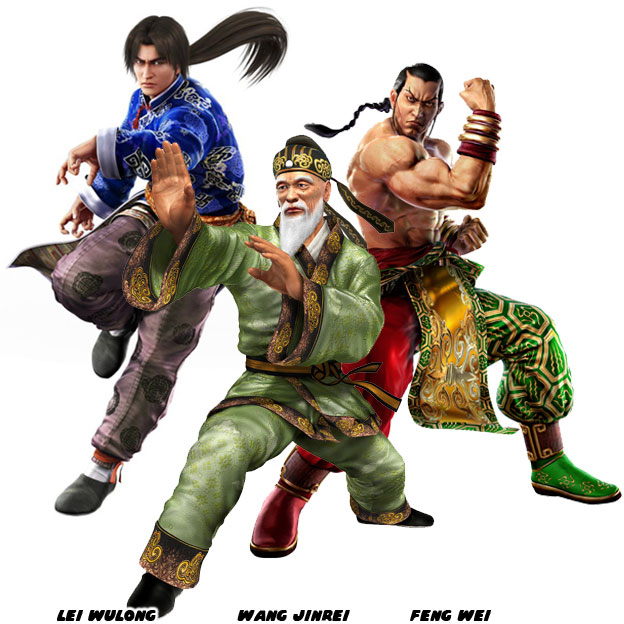
While Buddhist monks were credited for introducing kung-fu to China they have actually been grossly underrepresented in fighting games. Fans of the Mortal Kombat series might mention that Liu Kang and Kung Lao from the Mortal Kombat series were monks although they did not look or dress traditionally. The series was about as inaccurate as a fighting game could be when it came to representing actual fighting arts. The purpose of Mortal Kombat was to shock players with its ultra violent moves and fatalities. It was well done but it was fairly insensitive to Asian culture and traditions. In the history of fighting games were have been only two fighters based on actual Shaolin Monks. Lei Fei, appeared in Virtua Fighter 5 in 2001. There wouldn't be another monk worth mentioning until 2008. Kuan Yin Shen was the younger of the two and he appeared in Capoeira Fighter 3 by Spiritonin. The character was actually named on a Buddhist deity. Sega was a Japanese developer and Spiritonin was a US developer. The representation of traditional Shaolin kung-fu was indeed extremely rare around the world. But why was this? Perhaps religious undertones made the monks appear less intimidating in the games. It didn't matter if they studied the iron body techniques, could run on water or knew the death touch. In western circles a person in a robe just didn't seem as formidable as say a seven-foot cyclops that practiced Muay Thai. In Hong Kong cinema this was not the case, monks of different schools could be the subjects of action films. The classic Shaolin vs Lama highlights the fighting capacity of religious followers.
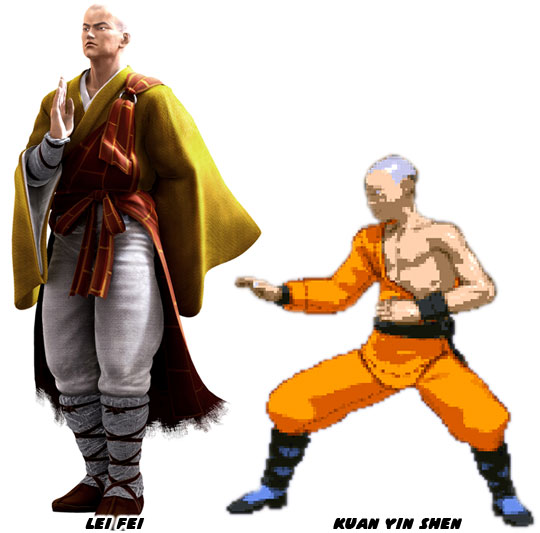
Popular culture dictated which styles appeared in a fighting game and even how the fighters themselves would be presented. Hong Kong cinema was the root of many kung-fu tropes. Some of which were based on historical figures but the vast majority were made up. The next blog will highlight how cinema influenced the evolution of the fighting game genre. I hope to see you back for that. As always if you enjoyed this blog and would like to sponsor me please visit my Patreon page and consider donating each month, even as little as $1 would help make better blogs and even podcasts!

Hey Noe, (or Mex) what do you think of Jailhouse Rock?
ReplyDelete